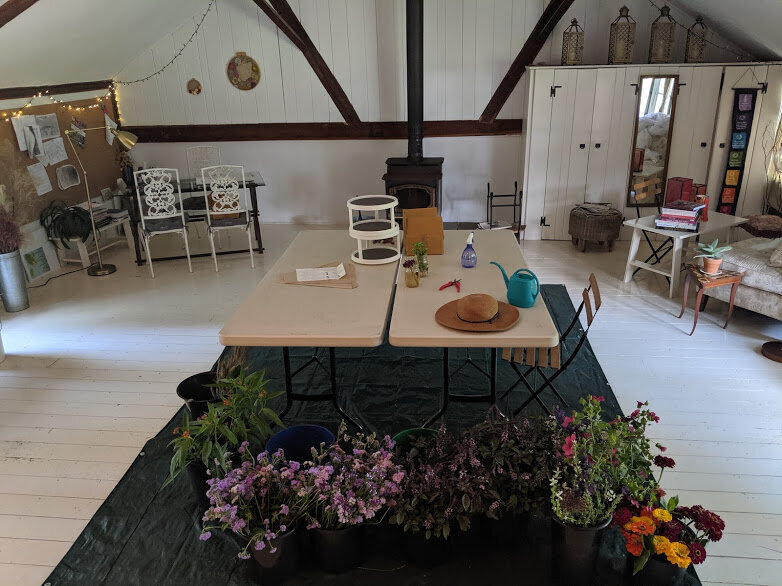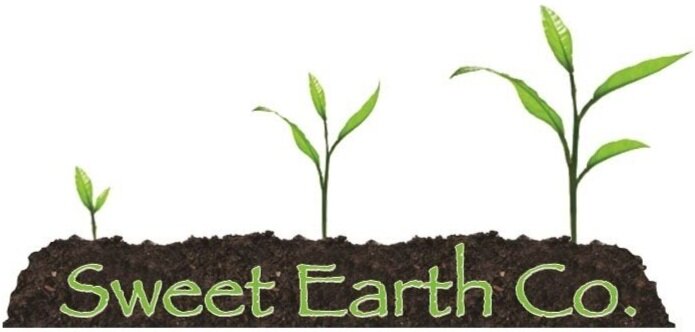Search by topic:
Watering Wisely: How to Garden During Water Scarcity
In a world where water scarcity is becoming more of a concern, eco-gardeners face the unique challenge of caring for their plants while conserving water. The good news is you don’t have to sacrifice your lush garden. Instead, you can employ wise watering practices, from planting native varieties to setting up the right watering schedule.
Mid-Season Garden Check-In: How to Assess & Make Changes
The gardening season may be flying by, but that doesn’t mean it’s time to think about fall just yet! There are still plenty of things to focus on in your garden during the mid-season.
Spring Rose Pruning Tips for a Bountiful Rose Cutting Garden
Roses, with their captivating beauty and delightful fragrance, are an excellent choice for any cutting garden. At Sweet Earth Co. we grow several varieties of roses and are excited to add 10 new varieties this spring. Whether you're a seasoned gardener or just starting out, here's a guide to spring pruning and maintaining your roses for a flourishing cutting garden.
Designing with Daffodils: Exploring Varieties Beyond the Ordinary
When we think of daffodils, the image of cheerful yellow blooms dancing in the spring breeze often comes to mind. However, there's a world of daffodil varieties beyond this classic image waiting to be explored. From traditional to modern, bespoke to boho, daffodils offer endless possibilities for creating elevated floral designs that are sophisticated, refined, and utterly captivating.
Garden Tasks You Should Do 4-6 Weeks Before Last Frost
Many of us are 4-6 weeks away from our last frost of the season, which means our garden tasks are ramping up!
Today we’re going over a few tasks that you should be doing now to prepare for your peak gardening season once last frost has passed.
End-of-Summer Gardening Checklist
The end of summer doesn’t mean the end of gardening for the year. There is plenty you can still do in the fall!
Late Blooming Fall Plants (That Are Also Good Cut Flowers)
Here are a few of my favorite late blooming fall perennials that also make for good cut flowers.
Fall Chores for Your Cutting Garden: 7 Ways to Prep for Next Season
When the flowers die back after the first frost, our work is far from over on the farm. Between tending to what remains of this year’s crops and preparing for the spring ahead — we are busy!
The Best Garden Tool is A Good Plan: Tips on Creating Your Own
You need a plan for what you are going to grow. A plan for where on your property you are going to grow it (and more specifically where in your garden beds you are going to locate everything you want to grow.) Lastly, you need a plan for when you are going to plant everything. This What-Where-When Plan is what will keep you from getting overwhelmed.
“Cool Flowers” You Can Plant In the Fall for Spring Bounty
You may know all about the great spring-blooming bulbs you can plant in the fall, but did you know that there are annuals you can grow from seed that will survive over-winter? You can put them in the ground in September and they'll bloom in the spring.
Why You Should Be Growing an Edible Landscape
In designing with vegetables you are mixing edibles with ornamentals and combining function and beauty. Consider the bright splashes of color squash blossoms, hyacinth beans or rainbow chard can add to the garden. Or the texture and dramatic accent added with the feathery foliage of asparagus, the silvery, deep-lobed leaves of an artichoke plant or the large, puckered leaves of Toscano kale. The feathery stalks or perennial seed heads can provide winter interest in the garden, as well as food and habitat for birds and pollinators.
Composting 101: Discover a Valuable Resource
Using the product of composting, the compost itself, is also important and valuable. Compost is worth its weight in gold. In fact it is often referred to as black gold. Adding compost to our soil improves the texture, structure, aeration, moisture level, drainage and utility of the soil. Compost balances the pH of soil and improves the electrical conductivity which helps plants access nutrients in the soil. The result is a better quality plant. One that thrives and is better equipped to ward off pests and disease, and, with respect to edible crops, one that has higher nutrient levels and tastes better. Use of compost also reduces and/ or eliminates the need to purchase and use chemical fertilizers. Topdressing lawns with compost improves the look of the lawn over time without using a chemical fertilizer.













